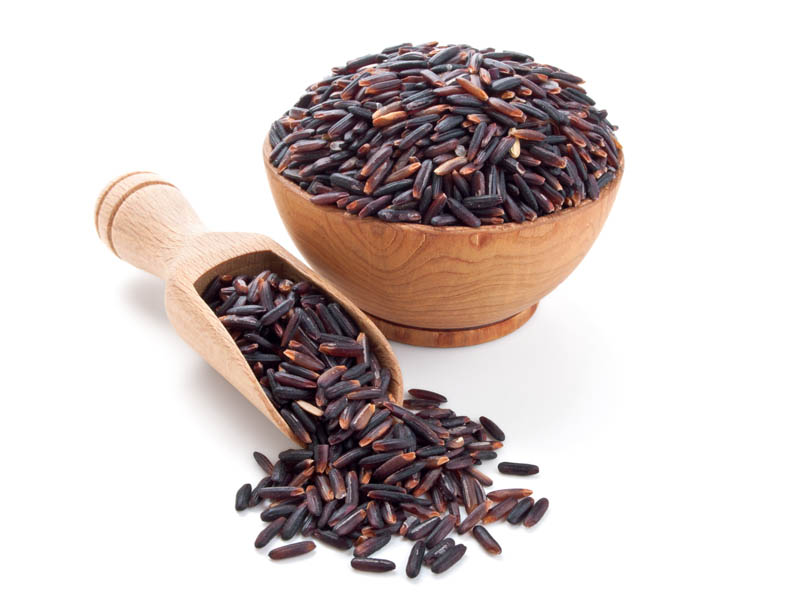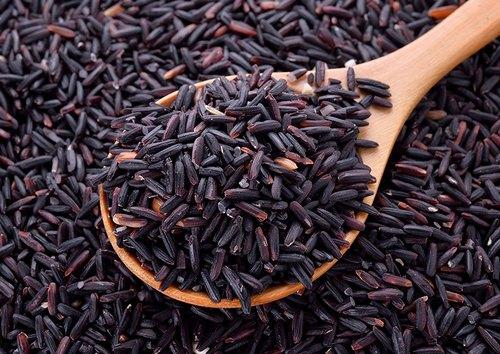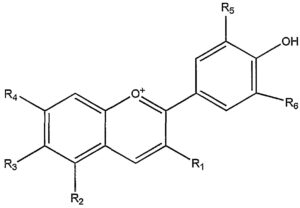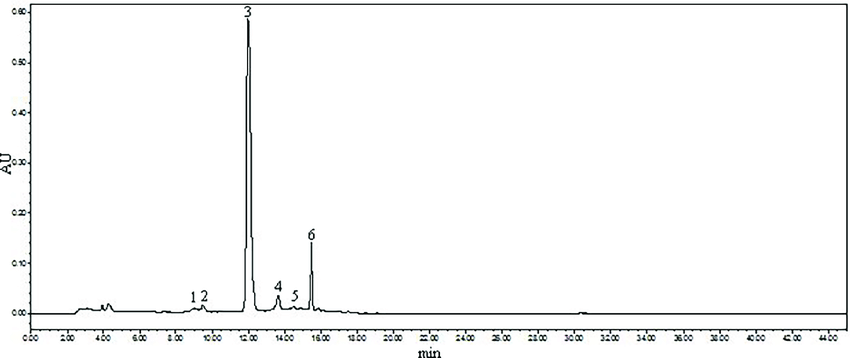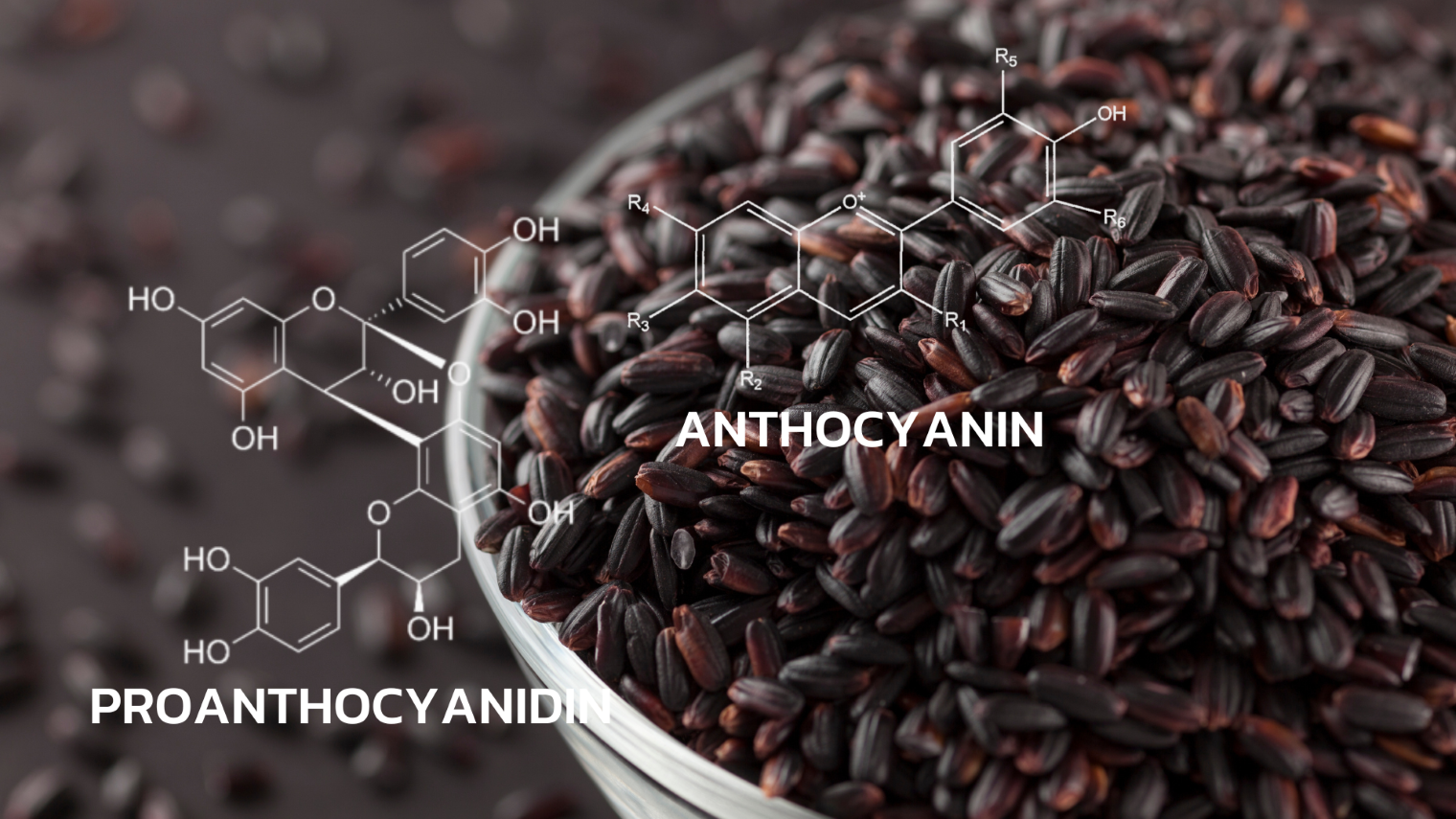
Information: Testing Services for Cyanidin 3,5 Diglucoside or Cyanidin 3-glucoside or Cyanidin 3-Rutinoside or Paeoniflorin using HPLC Technique.
VISBIO Co., Ltd. provides analysis and testing services for the biomarker compounds Cyanidin 3,5 Diglucoside, Cyanidin 3-glucoside, Cyanidin 3-Rutinoside, or Paeoniflorin in various health and beauty products. This service is applicable to all rice types, including parboiled rice, aromatic rice, and glutinous rice. Parboiled rice (Khao Si Nil), often referred to as ‘Khao Hom Nil’ or ‘Khao Kham,’ is a type of rice with black coloration, rich in essential nutrients. Compared to regular rice, aromatic rice contains up to 7 times higher nutritional value. Notably, it is enriched with Proanthocyanidin, a powerful antioxidant, surpassing the efficacy of vitamin C. Additionally, it aids in weight management by providing up to 35 times greater sweetness level when compared with sugar. The compounds presented in parboiled rice include Anthocyanin, Cyanidin 3,5 Diglucoside, Cyanidin 3-glucoside, Cyanidin 3-Rutinoside, or Paeoniflorin.
What is Khao Si Nil or Black Rice?
Black Rice, also known as aromatic rice or glutinous rice, is a type of rice characterized by its natural dark or black color, without any artificial coloring. It has a delicious taste and a distinctive aroma, setting it apart from other types of rice. Black rice offers several nutritional advantages compared to regular rice.
Black rice grains are slender and long, with a deep purple or naturally black hue. They have a sweet flavor and a soft, glutinous texture. When cooked, they turn into a light purple color. Black rice is notably rich in essential nutrients and, in fact, can have up to seven times more nutritional value than regular rice. One of its prominent benefits is the presence of Proanthocyanidin, a highly effective antioxidant that surpasses the efficacy of vitamin C. Additionally, it can assist in weight management since it provides a sweetness level up to 35 times greater than sugar.
Chemical Compounds in Black Rice
The extracts from black rice contain Anthocyanin and Proanthocyanidin.
It has been found that certain types of Anthocyanins, such as malvidin-3-glucoside and petunidin-3-glucoside, have lower efficacy than others, like cyanidin-3-rutinoside and delphinidin-3-glucoside.
As a result, Black Rice is rich in various essential compounds and nutrients, particularly those from the Anthocyanin group. These compounds offer numerous health benefits, including:
- Inhibition of cell growth and destruction of cancer cells in the lungs, nasal passages, and digestive system, as well as in white blood cells.
- Antiviral properties, with in vitro experiments demonstrating its ability to kill HIV-1 viruses and inhibit the action of Reverse Transcriptase enzymes in the virus.
- Prevention of the oxidative reaction of low-density lipoprotein (LDL) cholesterol, thereby reducing the risk of developing atherosclerosis or heart disease.
- Reduction of cellular damage caused by free radicals.
- Mitigation of skin damage due to oxidative reactions from sunlight and various pollutants, promoting a more youthful appearance.
Anthocyanin
Proanthocyanidin
Nutritional Value of Black Rice
Black rice, is rich with essential nutrients for the body. It contains carbohydrates, proteins, vitamins (such as vitamin E and B vitamins), calcium, iron, potassium, rice bran oil, antioxidants, dietary fiber, anthocyanins, unsaturated fatty acids, omega-3, and phosphorus. These nutrients play a vital role in nourishing the brain, supporting eye health, and enhancing healthy hair.
The purple-hued outer layer of the rice kernel contains anthocyanins, which consist of deep purple cyanidin, light pink peonidin, and proanthocyanidin, a brown pigment. These components form a group of flavonoids with antioxidant properties. They function by capturing free radicals, enhancing the body’s normal mechanisms more efficiently than usual.
Black rice, or aromatic rice, is an elongated, dark purple to black grain. It has a protein content of up to 12.5%, carbohydrates at 70%, and higher levels of minerals such as iron, zinc, calcium, and potassium compared to white rice. It offers several benefits, including:
- Effective antioxidants that outperform vitamins C and E, as well as beta-carotene.
- Contains vitamin E, B-complex vitamins, and anthocyanins, which improve blood circulation.
- Restore and enhance the condition of hair, preventing premature graying and breakage, and promoting softness and strength.
Expanding Black Rice into Health and Beauty Industries.
Currently, the trend of consuming health and wellness products is on the rise. This is evident from the numerous health products available in the market. Consumers are shifting their focus rapidly towards health and natural ingredients. In this regard, black rice is emerging as an alternative for the development of health and beauty products.
Whether it’s snacks, crackers, cookies, black rice beverages, black rice coffee, or skincare products like black rice nourishing cream, black rice acne spot treatment cream, black rice soap, shampoo, and hair massage cream, black rice is being transformed into a variety of products to cater to the health and beauty needs of consumers.
Report Example: Results for Black Rice Extract using HPLC Technique.
From the chromatogram in the figure, it shows the compounds extracted from black rice at 520 nm. Peak 1 corresponds to cyanidin-3,5-diglucoside, Peak 2 cannot be identified, Peak 3 represents cyanidin-3-glucoside, Peak 4 corresponds to cyanidin-3-rutinoside, Peak 5 represents peonidin-3-glucoside, and Peak 6 corresponds to peonidin-3-rutinoside.
Literature:
- “Comparison of phenolic and anthocyanin content among four differences of raw and cooked rice”. Chatchawin Petchlert1,2*, Thammanoon Sangprathum1. Department of Biochemistry, Faculty of Science, Burapha University, Chon Buri
- “Research and Development Project of Bamboo Fungus (Phallus indusiatus) Cultivation by Using Different Fruit Leaves Combine with Climbing Vegetables for Value-Added of Waste in Fruit Orchard”, Atchara Boonroj, Watcharawit Rasamee
- “Production of Healthy Beverage from “Homnil” Rice” จุฑามาศ ถิระสาโรช, เฉลิมพล ถนอมวงค์. สาขาวิชาเทคโนโลยีการอาหาร คณะวิทยาศาสตร์และเทคโนโลยีการเกษตร มหาวิทยาลัยเทคโนโลยีราชมงคลล้านนา พิษณุโลก
- “มหัศจรรย์พันธุ์ข้าวไทย คุณค่าก้าวไกลจากวิถีไทยสู่วิถีโลก (4) ข้าวหอมนิล: ข้าวเจ้าหอมสีนิล โภชนาการสูง” รศ.ดร.อภิชาติ วรรณวิจิตร. ข้าวหอมนิล, นวัตกรรมงานวิจัยพันธุ์ข้าว, มหาวิทยาลัยเกษตรศาสตร์
- “เกษตรนวัตกรรม รวบรวมผลงานวิจัยนวัตกรรมทางการค้นตว้าวิจัยในวาระครบรอบ 72 ปี แห่งมหาวิทยาลัยเกษตรศาสตร์” รศ.ดร. อภิชาติ วรรณวิจิตร, ดร.ธีรยุทธ ตู้จินดา, ดร. สมวงษ์ ตระกูลรุ่ง ศูนย์วิทยาศาสตร์ข้าว มหาวิทยาลัยเกษตรศาสตร์ กำแพงแสน จ.นครปฐม
- “สารสกัดหลักของข้าวสีนิล (Anthocyanin) (Proanthocyanidin)” เว็บไซต์ https://www.bloggang.com/m/viewdiary.php?id=hnsoul&group=12
- “ข้าวหอมนิล” เว็บไซต์ https://www.thairicedb.com/rice-detail.php?id=16 สืบค้นเมื่อวันที่ 30/12/2022
- “ข้าวหอมนิล” เว็บไซต์ https://www.akericemill.com/th/products/361542-ข้าวหอมนิล สืบค้นเมื่อวันที่ 30/12/2022
- “ประโยชน์ของข้าวหอมนิล” เว็บไซต์ https://greenshopcafe.com/greennews819.html สืบค้นเมื่อวันที่ 30/12/2022
- Yongsheng Zhu, Hanju Sun, Shudong He, Qiuyan Lou, Min Yu, Mingming Tang , Lijun Tu, 2018, Metabolism and prebiotics activity of anthocyanins from black rice (Oryza sativa L.) in vitro, PLoS ONE 13(4):e0195754.


